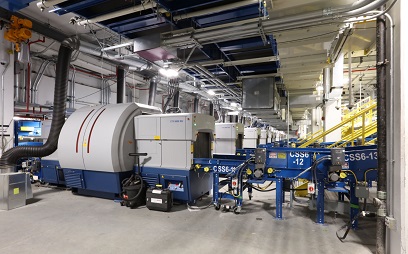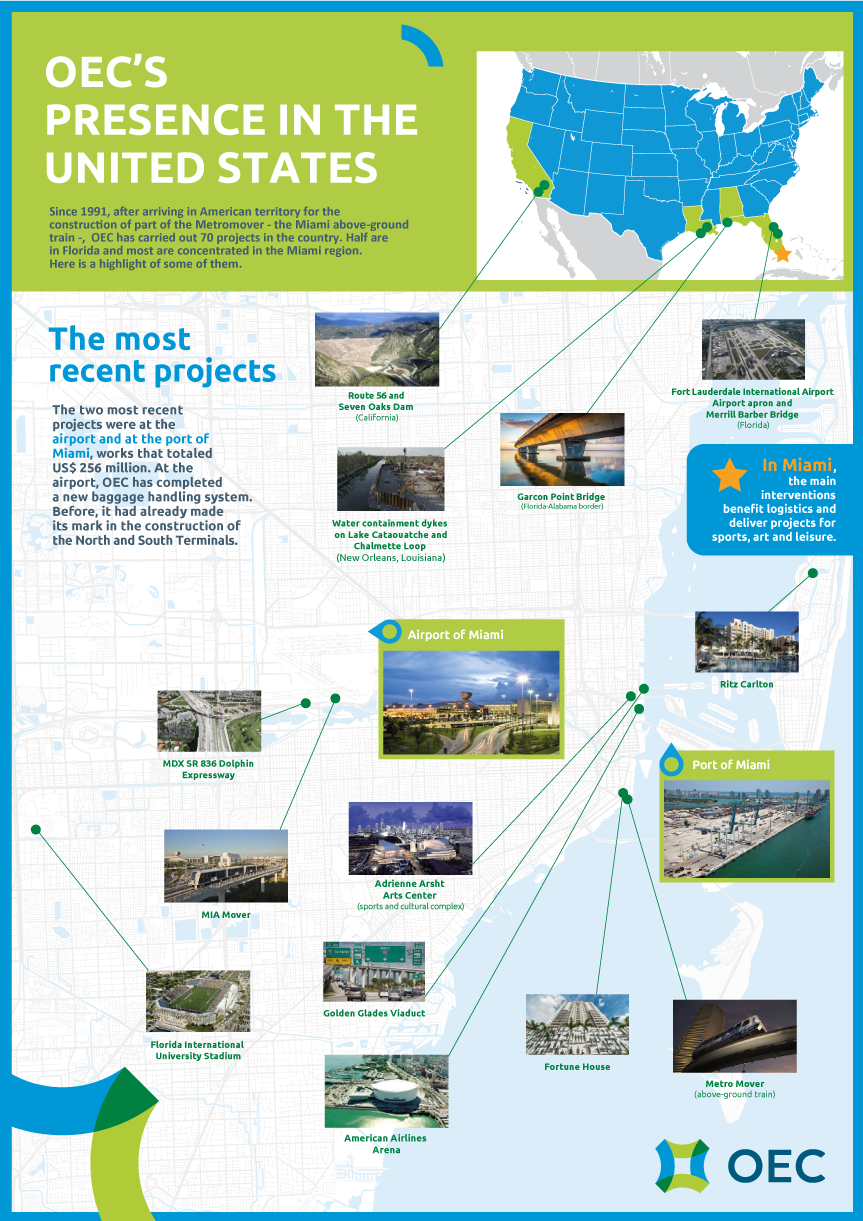 OEC has just delivered two important transport and logistics infrastructure projects in Miami, Florida (USA). At the Miami International Airport, the passenger sector was improved with new structures for handling luggage. In the Port of Miami, a new structure that allows the use of cranes will optimize (increase) 40% of the container handling and storage capacity. Together, the two works represented investments of US$ 256 million (R$ 1.4 billion) for the North American city.
OEC has just delivered two important transport and logistics infrastructure projects in Miami, Florida (USA). At the Miami International Airport, the passenger sector was improved with new structures for handling luggage. In the Port of Miami, a new structure that allows the use of cranes will optimize (increase) 40% of the container handling and storage capacity. Together, the two works represented investments of US$ 256 million (R$ 1.4 billion) for the North American city.
Inaugurated in 1928, the airport is a hub for the Southeast USA and the main connection point between the country and South America. Due to tourist attractions and local economic growth, Miami International Airport has become one of the largest hubs in United States airlines. Passenger flow was around 45 million a year (before the Covid-19 pandemic).
The Brazilian company OEC has been carrying out expansion and modernization works at the airport since 1991. Now, it has just completed the construction of a new baggage dispatch and handling system. Among other extensions and renovations executed by OEC in the region, the construction of the North and South Terminals are projects that stand out. Also in Miami, OEC was responsible for the structures for the Metromover, a light rail vehicle system that connects to the subway systems (Metrorail) and city buses (Metrobus).
In turn, the city's port (Port of Miami), known as the Port of the Americas, is one of the largest in the world and one of the most important in the American territory, with about 9 million tons of cargo and 4 million passengers per year. This movement represents a circulation of around US$ 12 billion/year. The Port of Miami has thirteen shipyards for containers and cargo and six cranes.
There, OEC delivered a structure that allows the use of a more modern crane model, with the capacity to move containers at speeds 40% higher than the traditional ones, in addition to the revitalization of an 81 thousand square meters area. There, two new terminals will be built to receive cruise ships, expanding the tourist attraction capacity of the region - in this project, OEC will prepare the site for the installation of the new terminals.
 By the end of 2020, OEC had already delivered the works on the MDX SR 836 Dolphin Expressway, consisting of six two-way lanes that cut the city in an east-west direction. The highway is an important route for transporting goods and people, connecting the city, Miami International Airport and the port, facilitating the transport of goods between the two modes. The intervention along 9.5 kilometers included the construction of two new lanes in both directions, paving of the roads, construction of 30 bridges, sound retaining walls and access ramps, in addition to lighting systems and intelligent traffic monitoring, soil drainage, landscaping, among other structures.
By the end of 2020, OEC had already delivered the works on the MDX SR 836 Dolphin Expressway, consisting of six two-way lanes that cut the city in an east-west direction. The highway is an important route for transporting goods and people, connecting the city, Miami International Airport and the port, facilitating the transport of goods between the two modes. The intervention along 9.5 kilometers included the construction of two new lanes in both directions, paving of the roads, construction of 30 bridges, sound retaining walls and access ramps, in addition to lighting systems and intelligent traffic monitoring, soil drainage, landscaping, among other structures.
The company's CEO, Marco Siqueira, classified the new deliveries in the USA as an element of pride and motivation for once again highlighting the construction company in the largest world economy. “In 2021 we have completed 30 years of operations in the United States and we intend to continue working on new opportunities in this market, which represents an important part of our history”, he says, recalling that the prospects are positive due to the infrastructure investment plans launched by the North American government: "The United States is now preparing to start an unprecedented investment in infrastructure."
Brazilian pioneering spirit in the US
OEC’s collaborations in Miami date back to the 90s. At the beginning of the decade, in 1991, the construction company started the Metromover project and became the first Brazilian company to carry out a public construction contract in the US. Since then, it has completed more than 50 projects in the country.
At the end of the decade, the Brazilian company built the American Airlines Arena, a sports gym with a capacity for 20,000 spectators, which currently hosts the Miami Heat games in the NBA. OEC was also responsible for the construction of the football stadium at Florida International University, delivered in 2008; the Adrienne Arsht Arts Center; and the elevated Golden Glades Interchange, among others.

Together, both contracts represented investments of US$ 256 million for the North American city, where the company has been operating since 1991.